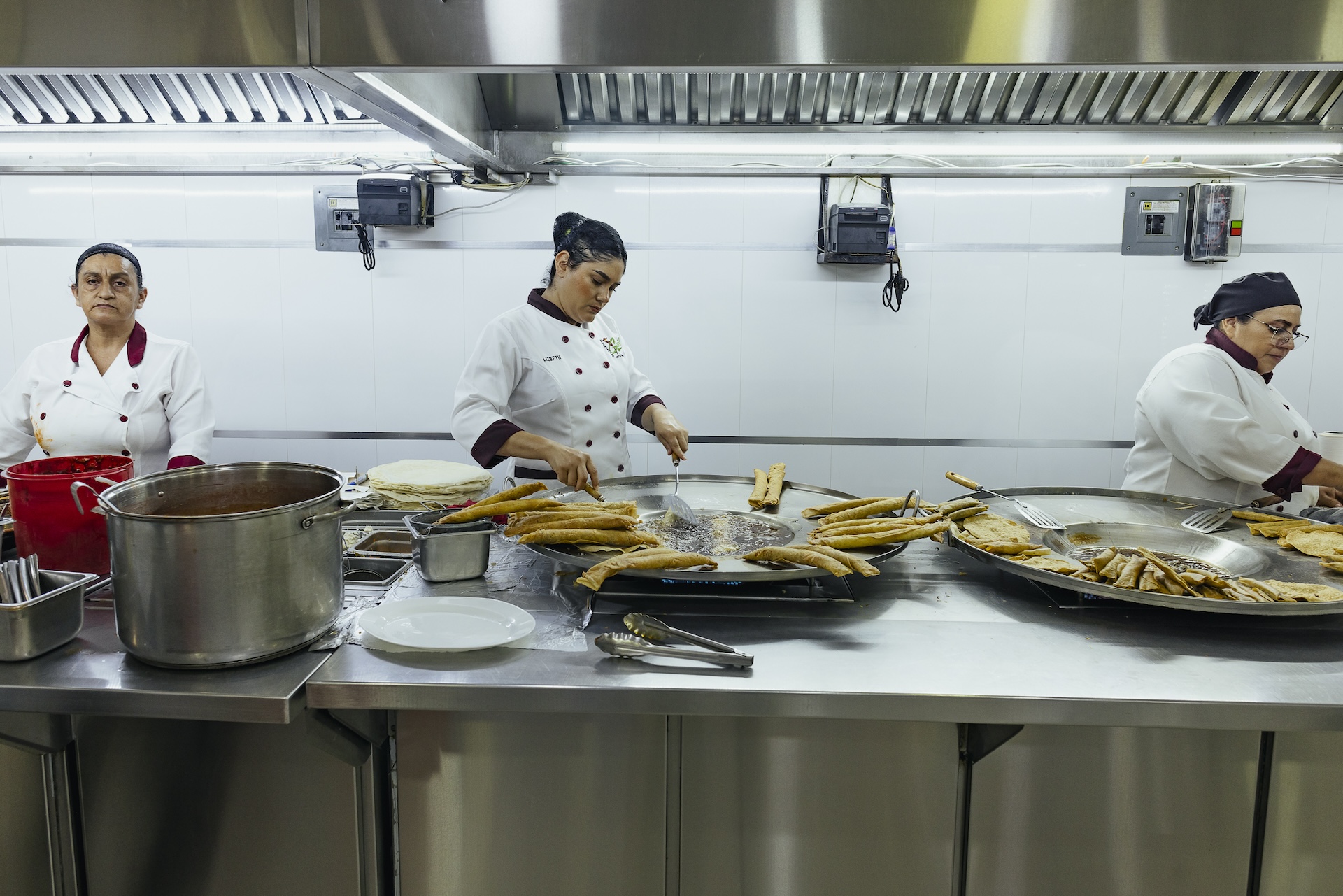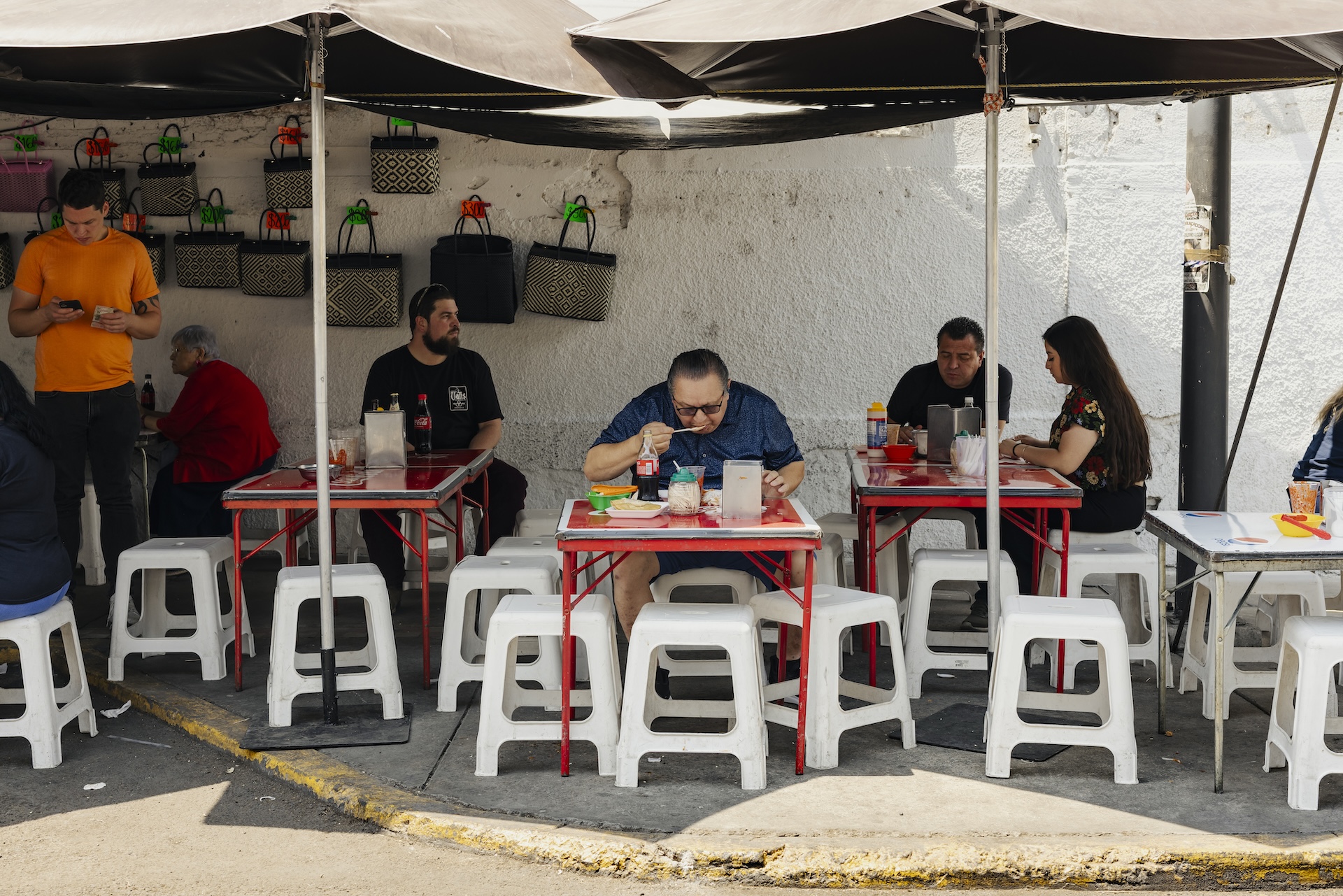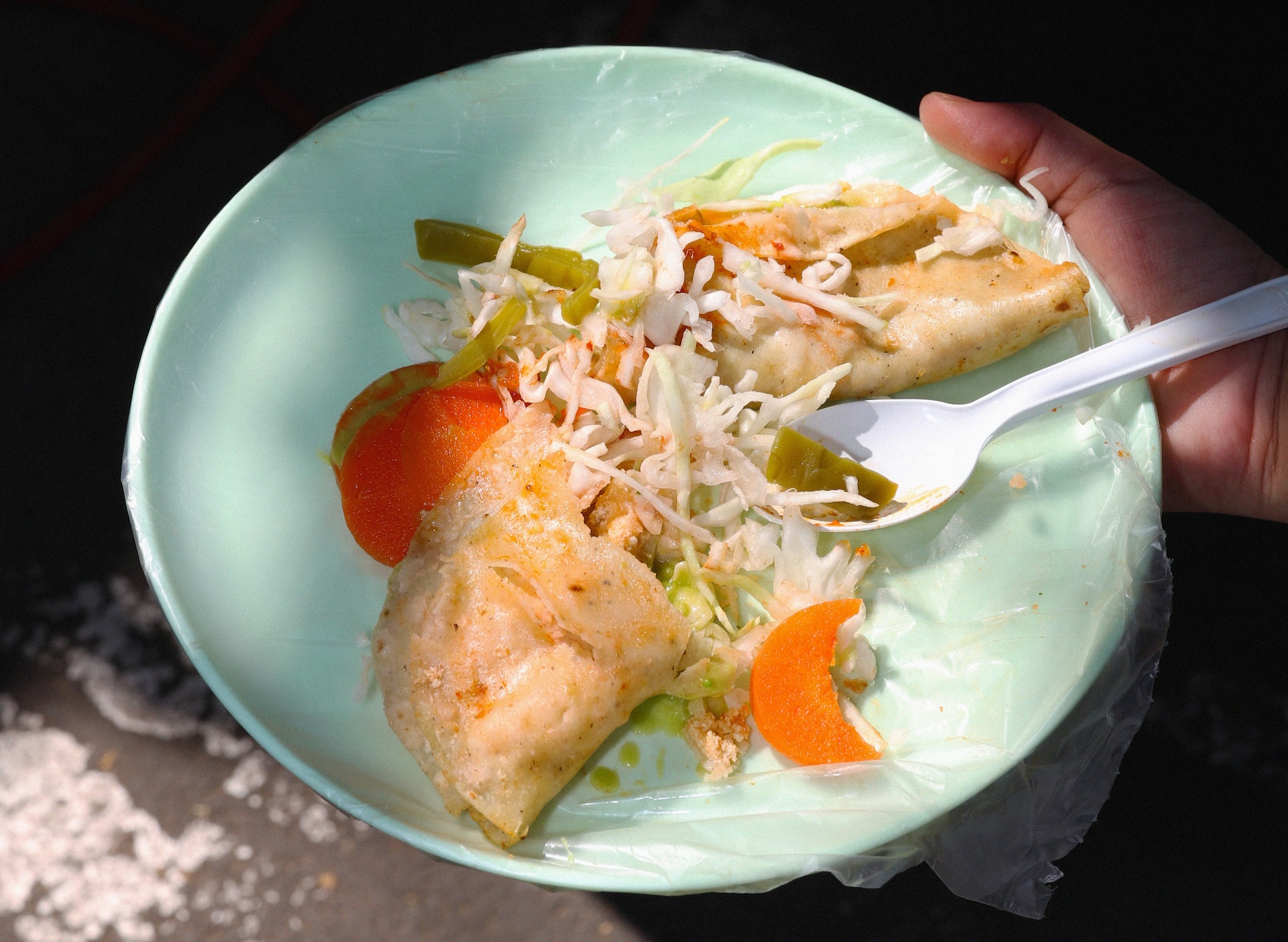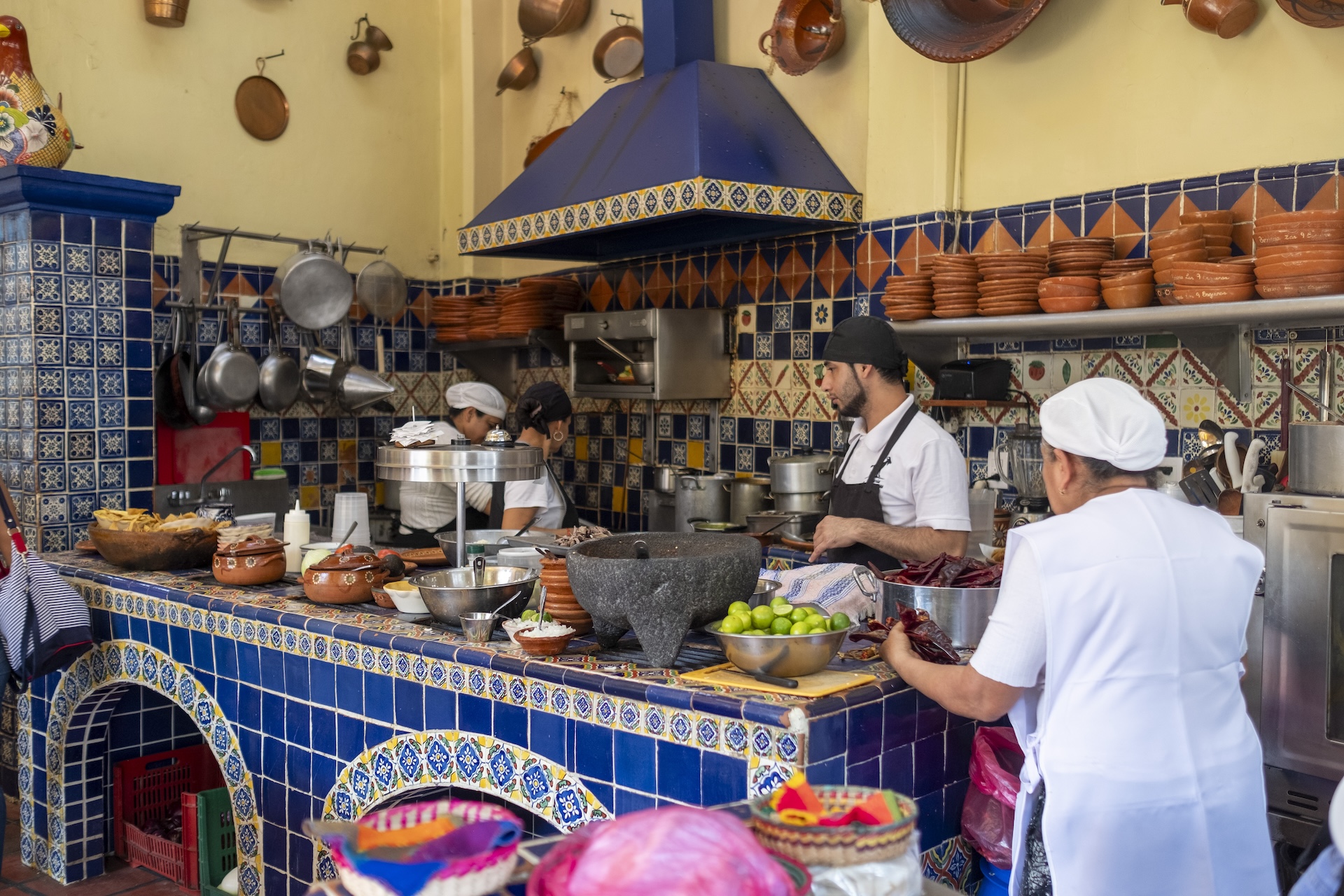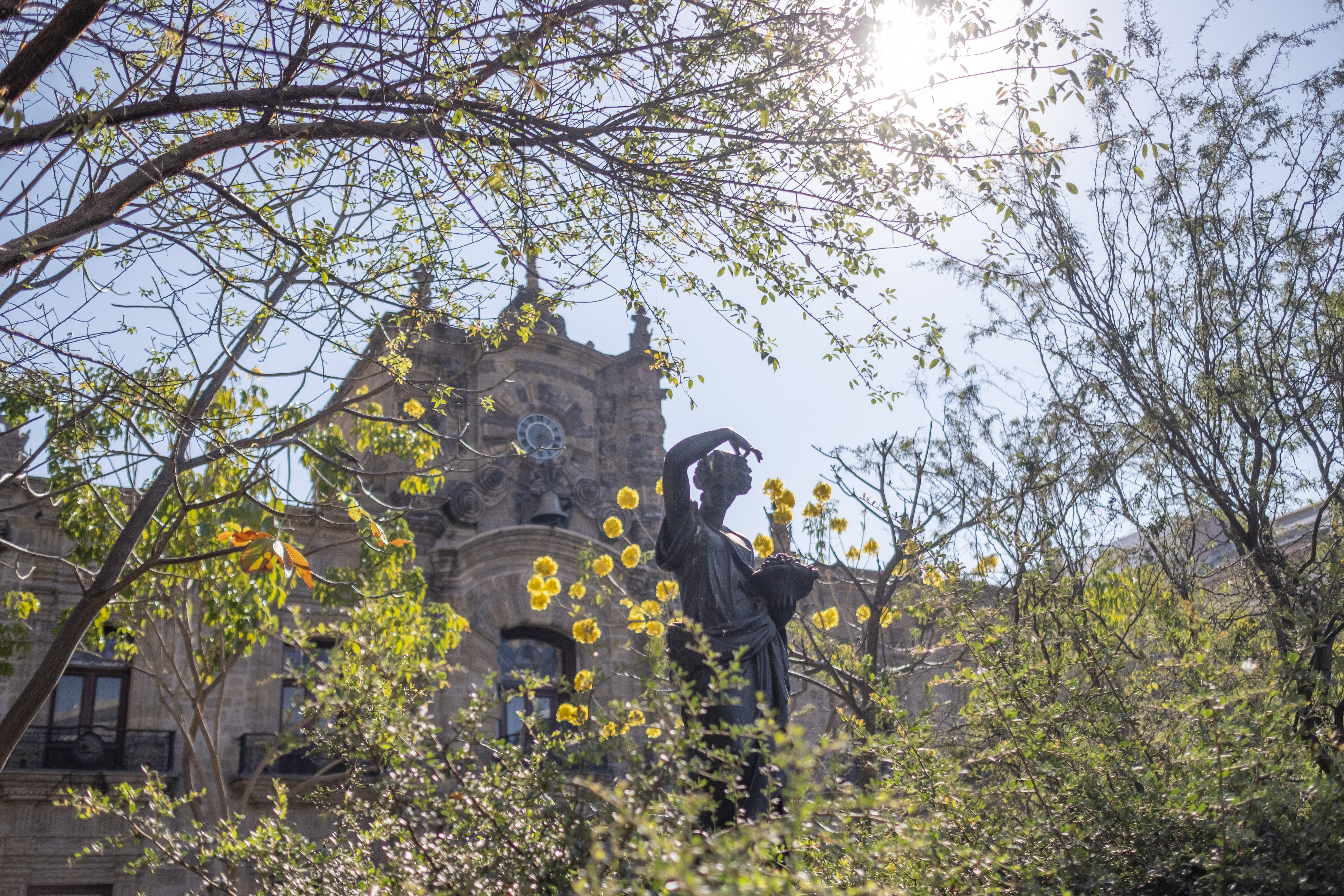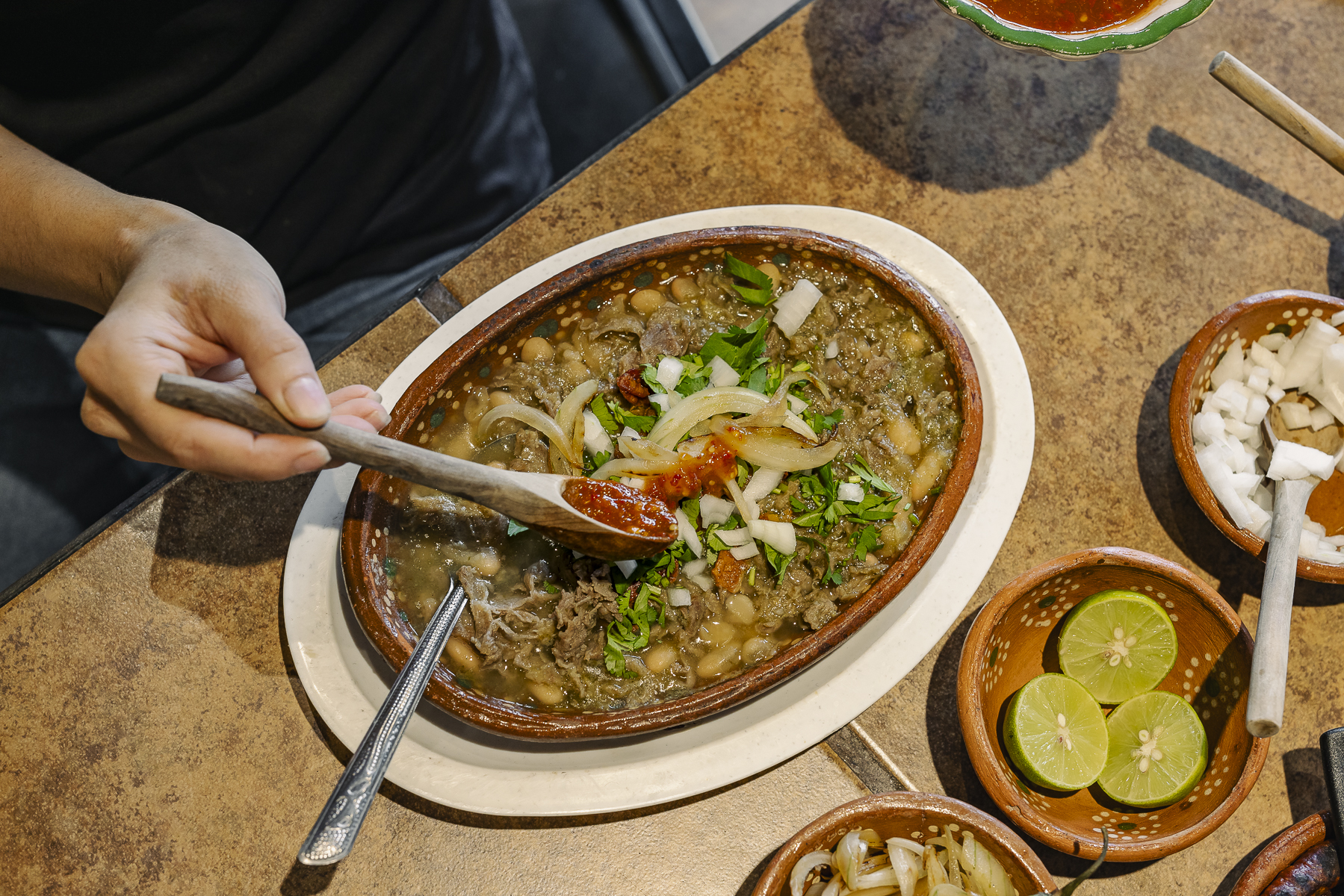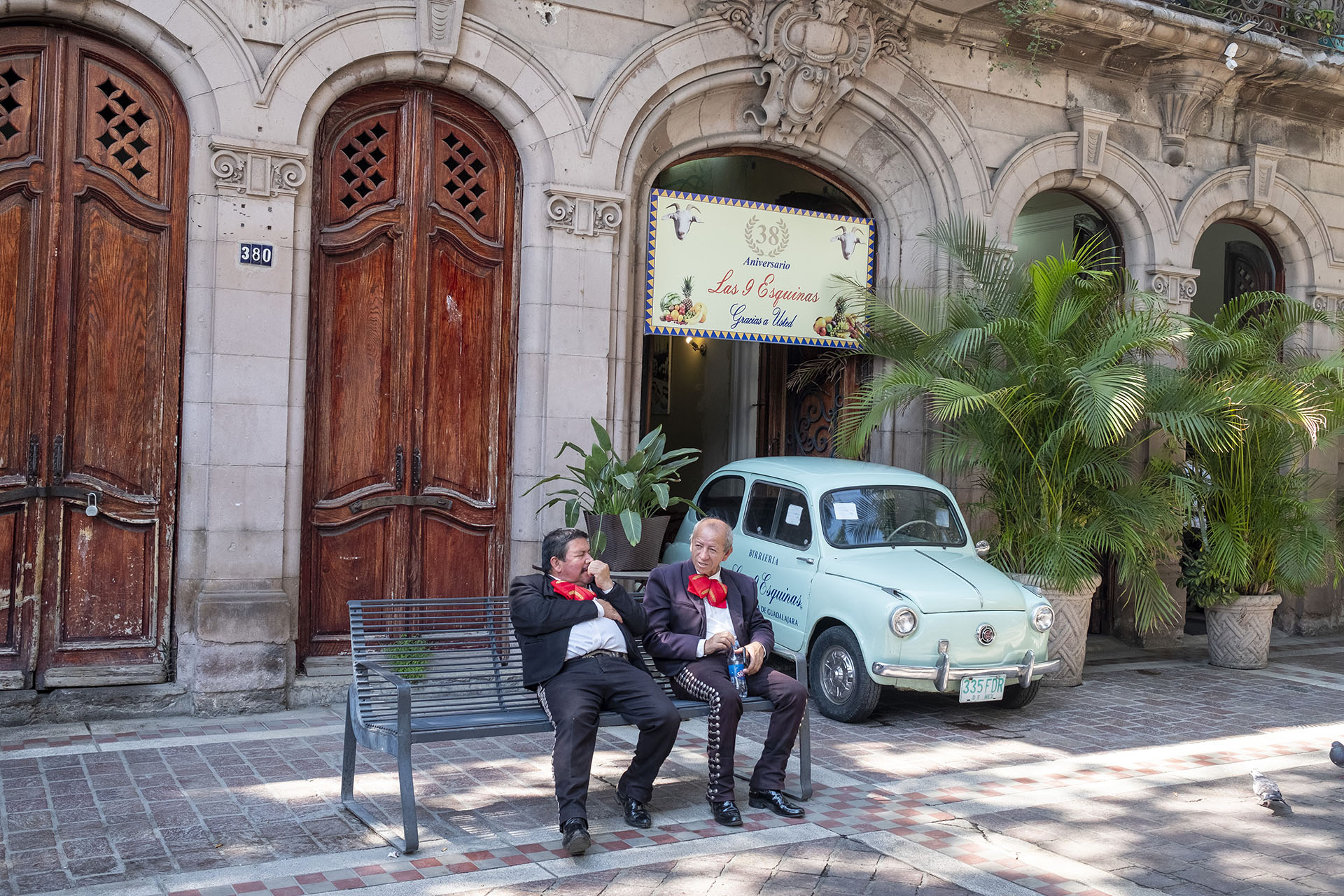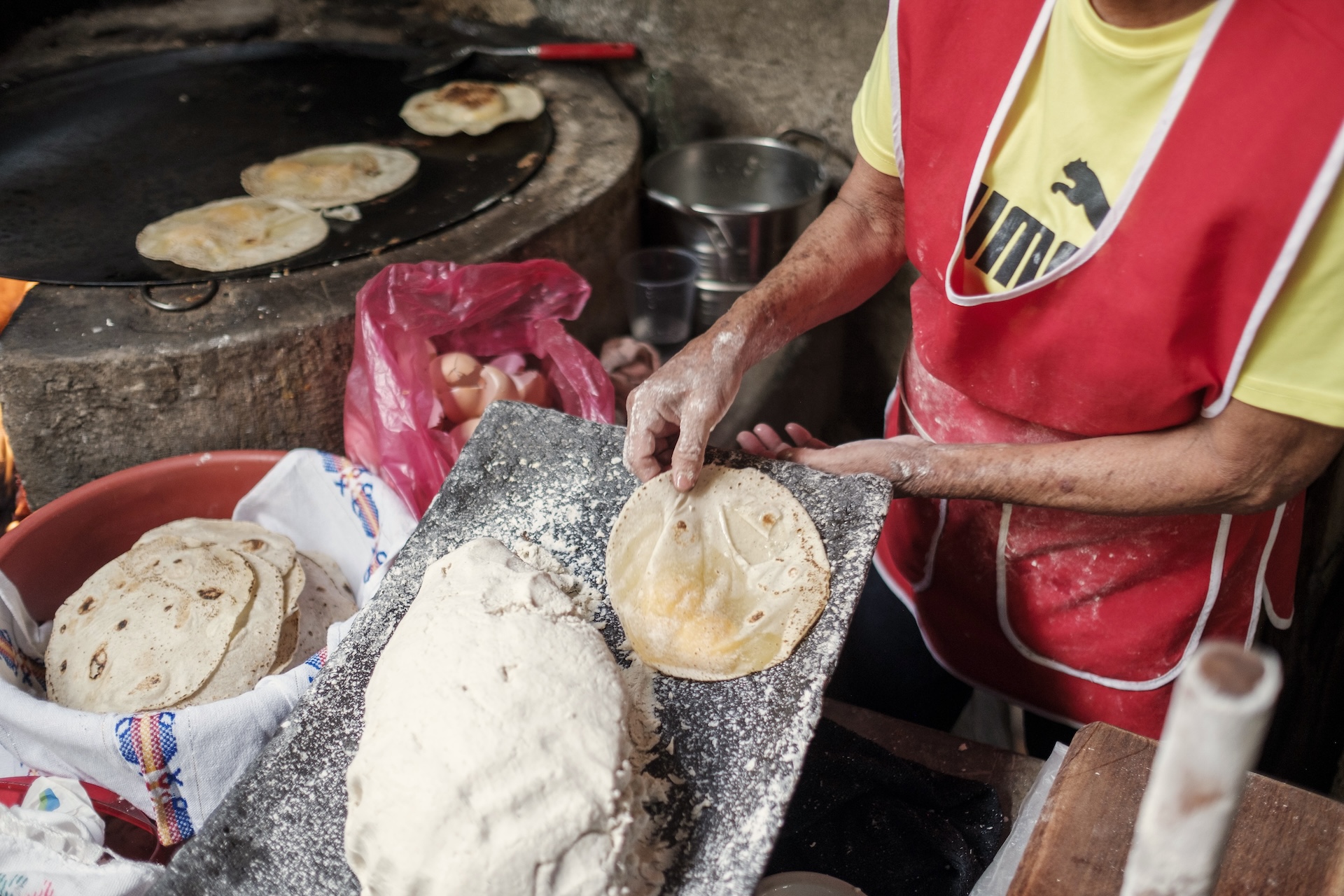We can't find the internet
Attempting to reconnect
Something went wrong!
Hang in there while we get back on track


Guadalajara
Guadalajara's culinary record
In Guadalajara, every sidewalk, corner, garage, vacant lot, food cart, car wash, and even bicycle has the potential to become a food stand – a restaurant just waiting to happen. But what truly sets our city’s gastronomy apart is its contradictions. It’s both stubborn and traditional, yet constantly evolving. It belongs to no one, and everyone. It’s both sacred and profane because, while locals take their recipes seriously, they’re not afraid to push boundaries and bring them to unexpected places.
Get the Full Story →Tour Guadalajara with Culinary Backstreets®
Upcoming Guadalajara Food Tours
discover the city, street by street, bite by bite
Explore Guadalajara
Guadalajara
Cenaduría Doña Guille: Dinner’s On
As night falls, the commercial life in Guadalajara’s popular neighborhoods doesn’t fade – it transforms. Everywhere you look, food stalls pop up, offering tacos, tamales, elotes, churros, and other tasty street treats, all glowing under hanging lights. These spots become local hangouts where people can grab a delicious bite before heading home. Cenadurías – literally “dinner places” – were among the first popular ways to serve meals outside the home. They have existed since the 19th century in streets, garages, and small eateries in traditional neighborhoods like Mexicaltzingo, Santa Teresita, Mezquitán Country, and Analco. These venues serve comforting dishes and mainly cater to workers and merchants finishing their day, providing a last chance to eat without complications before calling it a night. They also become go-to spots for families seeking simple, homestyle meals at affordable prices.
Read moreGuadalajara
The Essentials: Where We Eat In Guadalajara
Guadalajara, the capital of the state of Jalisco, is beloved as the birthplace of such Mexican icons as tequila and mariachi music. The city is a treat for the senses, a place that stokes the desire to see, smell, and taste everything it has to offer. As for the latter, it could take a lifetime – or a great many visits – to work your way through the delicious and varied specialties found here. Founded in Western Mexico in 1542 as a hub for regional trade, Guadalajara became a melting pot of culinary influences – and there’s a range of different kinds of places to discover them all.
Read moreGuadalajara
First Stop: Mónica Rodríguez’s Guadalajara
Editor’s Note: In the latest installment of our recurring First Stop feature, we asked documentary photographer and art director Mónica Rodríguez to share some of her favorite bites and sips in Guadalajara. Mónica is the photographer for the Guía Domingo book series, a taco photobook and guide whose third edition, Tacos Guadalajara, is available now. You can follow Mónica on Instagram @monicardz___ Guadalajara is one of the best food cities in all of Mexico. If you were to tell me that I’m going to Guadalajara right now, the first thing I’d do is go for breakfast at a taquería that I discovered when I went to shoot the photos for the book Guía Domingo. It’s a street cart called Tacos al Vapor Don Fede. I love the vibe of this place. You can tell that it has its lifelong customers – some go there for breakfast before work; there is nothing more Mexican than eating a taco while standing in the middle of the street. When I visited it was springtime and there were many jacaranda trees painting the street purple.
Read moreGuadalajara
Guadalajara: The State of the Stomach
In Guadalajara, every sidewalk, corner, garage, vacant lot, food cart, car wash, and even bicycle has the potential to become a food stand – a restaurant just waiting to happen. But what truly sets our city's gastronomy apart is its contradictions. It’s both stubborn and traditional, yet constantly evolving. It belongs to no one, and everyone. It’s both sacred and profane because, while we take our recipes seriously, we’re not afraid to push boundaries and bring them to unexpected places. Case in point: “birriamen” – a mashup of the very local dish birria with Japanese import ramen.
Read moreGuadalajara
Scenes from Our New Guadalajara Tour: A Photo Essay
Guadalajara is at once a symbol of both old and new Mexico. On one hand, it is a young and lively university city that has grown into a sprawling metropolis, a booming tech and innovation hub, and home to a vibrant LGBT scene. It’s particularly famous for other cultural events such as the Guadalajara International Film Festival and the annual Book Fair, the latter the largest in the Americas.
Read moreGuadalajara
Paco’s Picks: The Best Bites in Guadalajara
Editor’s Note: We asked Culinary Backstreets tour leader Francisco de Santiago, better known as Paco, to share some of his favorite spots to eat and drink in Guadalajara. Paco is a Mexico City native who has a deep passion for his country's cuisine. He is also a sort of renaissance man – a former champion chess player, bullfighter, and more recently, a professional gastro-guide – and Culinary Backstreets’ local expert on all things Mexico. Paco paid a recent visit to Guadalajara, a city close to his heart and the site of our newest food tour. As Guadalajara is a huge city (the second largest in the country, after Mexico City), there are many different ways to experience it. It’s famous among Mexicans because of the unique food you can enjoy only here, such as the torta ahogada, birria or jericalla.
Read moreGuadalajara
Carnes en su Jugo Mexicaltzingo 1617: The Artisanal Way
Around here, we all have a recipe for carne en su jugo and think our grandma’s is the best. A very local and traditional dish, it consists of beef cooked in its own juices – as its name in Spanish suggests – along with bacon and beans, and served with different toppings, such as diced onion and cilantro. To prepare this very flavorful and aromatic stew, the beef is cut into thin strips and simmered in a broth made from tomatillo sauce and chile verde – a recipe supposedly invented by a family in Los Altos de Jalisco (the highlands just outside the city) and passed down through generations, becoming a Guadalajara staple. Locals who want to enjoy this meal outside the home usually head to Santa Tere (also known as Santa Teresita), a bustling and historic barrio located northwest of Guadalajara's city center, home to a concentration of classic Mexican spots that specialize in carne en su jugo. Of course, they all claim to be the original creators. It’s a mystery that has never been solved, but we have bravely endured the uncertainty over the years, tasting the dish whenever we get the chance.
Read moreGuadalajara
Introducing Guadalajara: Through the Eyes of Our Local Team
Editor’s Note: To properly introduce Guadalajara, CB’s newest location, we turned to Eliza Osher, the local guide who helped design our culinary walk there. Born and raised in Los Angeles, where she studied pastry and breadmaking at Le Cordon Bleu, Eliza first came to Mexico to work at a boutique hotel on the Pacific coast of Jalisco state in 2005 and has been living in the country since. She moved to Guadalajara in 2006 after meeting her husband, an artist who grew up in the city. Deeply involved in the city’s arts scene, Eliza works as a language coach and also runs a lending library that she opened in 2015.
Read moreGuadalajara
Fonda Doña Mica: Trip to the Past
In recent years, the city of Guadalajara has grown so much that it’s starting to merge with the little pueblitos surrounding it. That’s the case with San Isidro, which is now a highly urbanized area but where you can also find some places that still feel like the old days. One of them is Fonda Doña Mica, a must-visit breakfast spot that was a well-kept secret until it went viral a year ago, famous for its traditional cooking and handmade wood-fired tortillas. Driving 40 minutes from the city center just to eat here may sound crazy, but hundreds of people do it daily – that’s how good it is.
Read moreDaily Dispatches from the Frontlines of Guadalajara
Latest Stories: Guadalajara
Immersive Multi-Day Journeys In and Around the World’s Culinary Capitals
Upcoming trips beyond Guadalajara
Culinary Backstreets® Envoys, Always Searching for the Next Hidden Gem
Meet Our Guadalajara Team

Eliza
Guadalajara Food Tour Leader

Bernardo
Guadalajara Photographer

Brenda
Guadalajara Correspondent

María
Guadalajara Photographer
Your Questions, Answered
Spring (March-May) and fall (September-October) are your best bets. The weather is comfortable – warm days, cool nights – and you’ll miss the rainy season. In October, Guadalajara throws one of the most important fairs in the countr
Guadalajara has a generally temperate climate. Summers (June-August) are warm and humid, with highs in the low 80s (°F) and frequent afternoon thunderstorms. Winters (December-February) are mild and dry, with highs in the low 70s and nights that can dip into the 40s. Spring and fall are the sweet spots.
Compared to many major cities, and especially Mexico’s beach resorts, Guadalajara is very affordable. You can eat incredibly well on a budget. A comida corrida (set lunch menu) might cost $5-8 USD, and even a nice dinner can be $20 per person. Street food is affordable and abundant, often under $3. A beer is about $2, a simple cup of coffee about $1, and three-star hotel around $30-50 a night.
Guadalajara, like any large city, has its safer and less safe areas. Stick to well-lit, populated areas, especially at night, and be mindful of your belongings. Don’t flaunt expensive items. The main tourist zones are generally quite safe, and common sense goes a long way.
Guadalajara has options for families. There are parks, plazas, and the Trompo Mágico interactive museum. Food can be made friendly for those with sensitive palettes (ask for “sin chile”). Just keep in mind that some streets and sidewalks can be uneven and difficult to navigate with a stroller.
Sitting inland, on a high plateau in west-central Mexico, Guadalajara is the capital of Jalisco state and known as La Perla de Occidente: The Pearl of the West. Think of it as Mexico’s “second city,” with around 5 million people in the metro area and a vibe distinctly different from Mexico City. The surrounding Jalisco countryside is protected as a UNESCO site.
Wind through Centro Histórico, home to the grand cathedral and the Teatro Degollado; browse Tlaquepaque’s artisan shops and San Juan de Dios Market, the largest indoor market in Latin America; explore the UNESCO World Heritage site Hospicio Cabañas; take a ride in a formerly horse-drawn, now-electric calandria carriage; and, above all, eat. Another popular thing to do from Guadalara is take the 2-3hr Tequila Express train to the town of Tequila (and yes, it’s about the drink, too).
The Centro Histórico is a good choice for first-timers, placing you within walking distance of major sights and restaurants. Colonia Americana has a more bohemian, trendy vibe, with boutique hotels and cafes. Zapopan is a more modern, upscale area.
Guadalajara International Airport (GDL) has direct flights from numerous US cities and other international destinations.
Guadalajara is landlocked. However, the beautiful Pacific coast beaches (like Puerto Vallarta) are only a 3-4 hour drive away.
Torta ahogada is the undisputed king – a crusty roll filled with carnitas and drowned in a spicy tomato-based sauce. Get your napkin ready. But don’t stop there. There’s the torta loca, a glorious maximalist sandwich packed with meats, cheeses, and often, a fried egg. Then, lonches – simpler sandwiches, usually on a soft roll, with fillings like pierna (pork leg) or panela cheese. And for a crispy, satisfying snack, grab some taquitos dorados (also known as flautas in some regions) – tightly rolled, deep-fried tortillas filled with shredded chicken or beef. And don’t miss tejuino, a fermented corn drink – it’s an acquired taste, but a local favorite.
Mexico has no COVID-19 restrictions at the moment. Always check the latest guidelines from both the Mexican government and your home country before traveling.
Americans can visit Mexico for tourism without a visa for up to 180 days.
That’s a tough one – it depends on what you’re craving! The best restaurants for us right now in Guadaljara are Francisco Ruano’s Alcalde and Xrysw Ruelas and Óscar Segundo’s Xokol. For tortas ahogadas, try El Viejito. Some of the best food is found at unassuming street stalls – the best thing to do is get out and explore.
Guadalajara’s accessibility is a mixed bag. The Centro Histórico has made some improvements, with wider sidewalks and ramps in some areas, but older buildings and uneven streets can still be challenging. It’s best to research specific locations and hotels in advance. Public transport is generally not very accessible.

